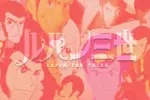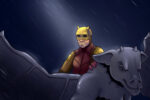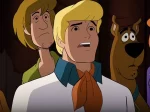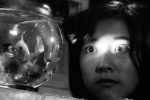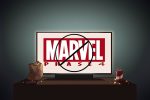“Godzilla vs. Kong.” “Freddy vs. Jason.” “The Simpsons Guy.” “Frankenstein Meets the Wolfman.” If two franchises grow powerful enough, there’s bound to be a crossover between them. The concept of crossovers has had a long history in the world of storytelling, dating back to ancient Greek times with tales such as “Jason and the Argonauts,” where the fabled hero sets sail with familiar faces such as Heracles and Polydeuces. Crossovers are always an exciting event to behold, even if the two colliding franchises are of conflicting genres. They bring fans together, they yield some interesting results and they’re entertaining to watch. Or, if you’re more of a literature type, entertaining to read.
Types of Crossovers
There are several crossovers, three of which are the most popular. The first is where two or more characters from different universes interact. A good example of this would be the recently released game MultiVersus, where fan-favorite characters such as Finn and Jake, the Iron Giant, Harley Quinn, Superman, and Bugs Bunny are all plucked from their respective universes and are thrown into a battle arena. The second kind is where two or more characters living in the same universe meet for the first time. Since everybody knows “The Avengers,” let’s use “X-Cops” as an example. This episode of “The X-Files,” aired in 2000, has the “Cops” film crew join forces with Fox Mulder and Dana Scully as they hunt a creature straight out of a Stephen King novel: an entity that can project one’s worst fears.
Lastly, there is the crossover in which characters from one universe exist within another. “Phineas And Ferb: Star Wars,” an hour-long special aired on Disney XD, is one such example. The show “Phineas And Ferb” is about two inventive brothers building awe-inspiring contraptions in the city of Danville. In the special, we find two alternate versions living on Tatooine as happy-go-lucky moisture farmers. When plans for the Death Star suddenly fall into their hands, they must leave the comfort of their desert home to deliver it to the Rebel Alliance.
The Best of the Bunch
For a crossover to work, it must be well-written (obviously) and stand on its own. There are plenty that have done so, like the “Supernatural” episode “Scoobynatural.” Here, Sam and Dean Winchester are sucked into the world of “Scooby-Doo, Where Are You!” through a TV, where they join the Mystery Gang in an effort to stop a ghostly killing spree. It’s a match made in Heaven: Two beloved groups who solve supernatural cases have been brought together at last. This special not only shows the distinct methodologies of these two groups, but also how they perceive the reality of monsters. For those unfamiliar with “Scooby-Doo,” don’t fret; the Mystery Gang works well with the story instead of simply keeping them around to gawk at. Each character is provided enough screen time to give audiences an idea of the classic cartoon’s signature formula.
The 1987 special “The Jetsons Meet the Flintstones” can be seen as the polar opposite of “The Simpsons Guy” in that it actually contains substance beyond squeamish gags and crass language. Plus, the special manages to explore the similarities and differences between the two families more thoroughly than in the latter example. The special follows the futuristic Jetsons as they try to make sense of the Flintstones’ prehistoric surroundings after a time machine accidentally sends them millions of years into the past. As one would expect, the culture shock they experience leads to hilarious antics. When the time machine sends the Flintstones to the future, the antics only get funnier.
The Worst of the Bunch
While the idea of merging two franchises together sounds fun, that doesn’t mean the end product’s going to automatically succeed. Fans were excited for the arrival of “The Simpsons Guy,” a crossover involving “The Simpsons” and “Family Guy,” but the end product wound up eliciting more groans than laughs. Too many times it relied on reused jokes and stale shock humor, with little substance meshed in between. Considering that it aired during a time when popularity for both shows began to wane, this special feels more like a cheap way to increase viewership rather than a genuine exploration of the chemistry between two of America’s most popular families.
“Space Jam 2: A New Legacy” is another crossover that failed. The original “Space Jam” has a premise so stupid it ironically becomes enjoyable: Michael Jordan teams up with the Looney Tunes to face off against the Nerdlucks, a team of monsters. While critics hated it, fans found it oddly charming, and today it is fondly remembered by millennials. There was clear passion behind the creation of “Space Jam,” and it’s clear the creators loved the characters; this presents a sharp contrast to “A New Legacy.” The sequel follows LeBron James as he tries to regroup the Looney Tunes in the Warner Bros. “Serververse,” a place where all things Warner Bros. are located. The second you see James fly past a planet with a ring spelling out “Game of Thrones,” you know exactly what kind of movie you’re in for: a “Ready Player One”-type experience filled to the brim with references and Easter eggs. But unlike the Steven Spielberg flick, in which they existed as miniature tributes to nerd culture, the references and Easter eggs here largely exist to pander. With so many references in almost every other frame, you come to believe that maybe they were placed as a way to distract you from the weak story.
Understanding the Characters
While crossovers are fun to watch, they can get a bit convoluted, especially when they’re hosted in the same universe. The Marvel Cinematic Universe would be the first to come to anyone’s mind, so let’s talk about it. Almost every product they pump out today has at least one character from some other movie or show. On one hand, this allows the MCU to feel more connected and tight-knit, and it allows fans to belt out their joy in the theater when they see their favorite heroes join forces.
On the other hand, every new product by the MCU seems to require its audience to watch a past movie or show in order to properly understand it. In “Doctor Strange in the Multiverse of Madness,” we see a broken Wanda Maximoff after the events of “WandaVision.” But unless you saw “WandaVision” yourself, you wouldn’t completely understand why Wanda is so broken and why she is suddenly going after children in a different universe. To be fair, the movie does give you some bits of information, but they’re mostly vague. For the rest of the movie, we’re treated to what is essentially the sequel to “WandaVision,” a show you can only watch if you subscribe to Disney Plus.
But the worst kind of crossover is the one in which characters only appear to please fans. In “Batman v Superman,” we already know the story of Superman thanks to “Man of Steel” and we’re given some insight into Batman, but what about Wonder Woman? She’s given very little development and abruptly shows up guns blazing in the third act. You could say that everybody already knows who she is, but let’s say someone who’s never watched a single DC movie or read a single comic starts watching the movie. Aside from an old photo and a scene in which Batman (as Bruce Wayne) alludes to her true identity, they’ll have no idea who this superpowered woman with a sword and shield is. Only after “Batman v Superman” did she get a proper introduction with her own movie.
Of course, you don’t have to understand the characters to enjoy a crossover. The Super Smash Bros. games are great examples of this. Currently, there are 89 characters on the roster, so it shouldn’t be surprising if you aren’t familiar with at least one of them. But knowing a character personally is not required for this game. All you have to know are their attacks, their specials, and you’re set. If you intend on telling a crossover story, however, you should introduce the characters either in their own movies beforehand or give them a brief history within a movie to fill in the blanks. It doesn’t have to be an elaborate production: It just has to be enough for audiences to grasp who these characters are. Despite its flaws, “Zach Snyder’s Justice League” does this successfully by giving every major character without an individual film of their own some development. Sure, it made the movie over four hours long, but it far surpasses Joss Whedon’s “Justice League” by miles.
Crossovers are increasing in popularity these days. If you ever wish to take a piece of the crossover pie, you should always start with a genuine love for the franchises you plan on bringing together. Simply bringing two franchises together for a quick buck will only lead to tepid results, so it’s important to have a deep understanding of the material you’re using. Also, it’s important to keep the crossover open for unfamiliar eyes (as they have the potential to become new fans of either franchise) while simultaneously giving old fans justifiable reasons for enjoying it. In the right hands, even the zaniest of crossovers can work; they just need a sense of heart and soul.




